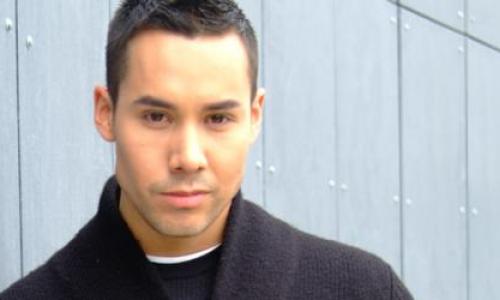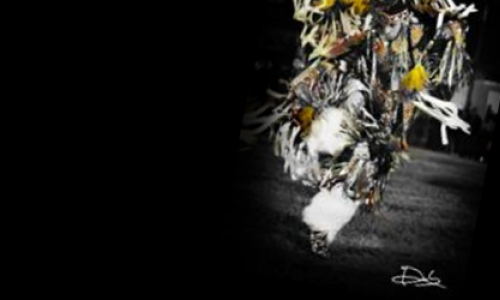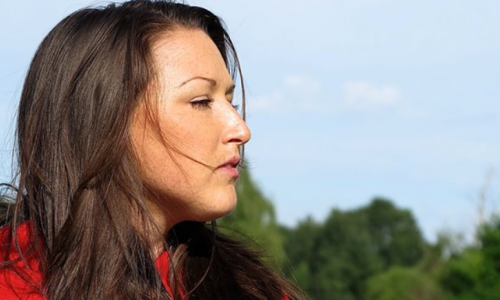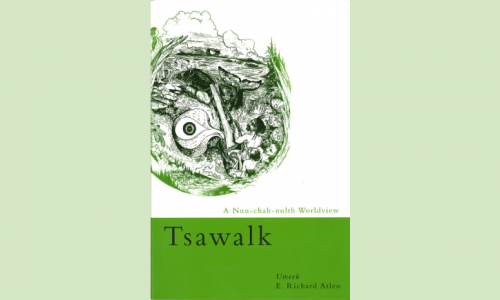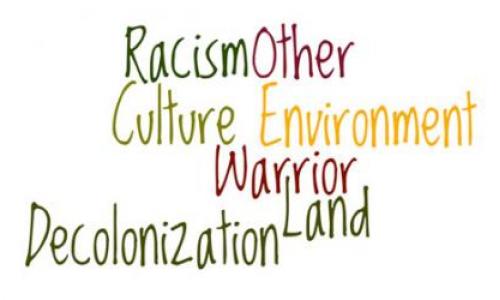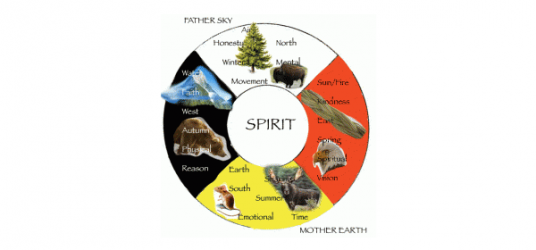
This is dedicated to my Grandmother, Marjorie Mackie. She has the strongest spirit of anyone I know…and I’m just like her…
I visited my Grandmother (Grammi) over reading break and as we spent time together, I told her about SFU and my position as Indigenous Program Researcher with Career Services and my newly acquired position of Indigenous Ambassador. Grammi suggested that I bring the Medicine Wheel into my work life at school, and to be honest, that thought hadn’t even occurred to me.
Grammi has spent many years working as a counsellor at Round Lake Treatment Centre, an Aboriginal treatment centre that emphasizes culture as treatment. The centre is highly successful and Grammi has been a part of the inner workings of the centre since 1979. She facilitates workshops teaching the Medicine Wheel, demonstrating the importance of implementing each aspect of the wheel into our daily lives in order to reach health and wellness. I have heard her teach it many, many times and I never grow tired of listening to her and learning from her.
The Medicine Wheel
The Medicine Wheel can be found within many different cultures around the world and while each interpretation may be different, the purpose is the same, to implement a holistic view of life. This is how I know the Medicine Wheel as taught to me by my Grandmother, Marjorie Mackie.
The Circle
To begin, we think of a circle. What is a circle? What does a circle represent? It represents eternity; no beginning, no end as it is with Spirit. We come to the earth as spirit and we leave the world as spirit, or energy if you like. This is at the center of the wheel, the circle within the circle.
The Red People.
Red is the colour of the world’s Aboriginal population including the Aborigines of Australia.
The element related to this quadrant is Sun/Fire and is represented by a braid of Sweetgrass, but it includes all plant life. Plants need the sun in order to grow as every living cell needs sun energy.
The principle that is taught by the braid of sweetgrass is Kindness because everything from the ground is giving of itself, it does not ask for anything in return.
The direction of East is found within this section of the wheel and as the sun rises in the east it is a symbol of newness. It reminds us to say our prayers or to state our intention for the day. It also gives us the benefit of change, to begin again.
The season of Spring is found within the first quadrant and this is where we invite and accept new beginnings into our lives.
The red people teach us to nurture the Spiritual, and to be aware of our beliefs our values and our practices. Are they in alliance with our behaviour? Is there anything that we are doing that is in conflict with our beliefs and values? Do we need to make any adjustments?
The red people were given the gift of Vision. The keeper of the gift is the Eagle with its ability to see far. The eagle teaches us to use our vision to see beyond what is immediately visible to us.
The Yellow People
Yellow is the colour of the world’s Asian population.
The element related to this quadrant is Earth and is represented by Animal. When the animal dies, its body returns to the earth.
The principle that is taught by animal is Sharing. The animal gives up its life so that I might live. Animal teaches us to share of ourselves and to always give thanks for what we have been given.
The direction of South is found within the second quadrant and this is a time of growth.
The season of Summer is also found here. This is when the earth is closest to the sun and it is meant as a time to gather strength for the winter. The earth experiences growth during this time; gardens, flowers, grass etc. and we experience growth as well as it is a time to work in preparation for the coming seasons.
The yellow people teach us to nurture the Emotional and to be aware of our feelings. Remember there are no positive or negative feelings; no right or wrong, they just are. It is what we do with them that are important. Are we lashing out or internalizing our feelings? Are we being constructive with our anger or wallowing in self-pity? Do we share our joy?
The yellow people were given the gift of Time as they are the ancient ones. The Mouse is the keeper of the gift with its ability to look within. The mouse teaches us to look inside ourselves and see ourselves honestly.
The Black People
Black is the colour of the world’s African population.
The element related to this quadrant is Water and is represented by Mountain. Water flows from the mountain. It is always needed, it is to be respected and we are to be thankful. We must be aware of how we use water. Do we waste water or use it unnecessarily? Water is a source of purification.
The mountain teaches us the principle of Faith, as a mountain is solid. To have faith like a mountain is to be free of doubt and fear and stand strong in one’s faith.
The direction of West is found here and the west is where the sun goes down. In the west, it is a time of rest and of death. The west gives us the opportunity to release the problems of the day.
The season of Autumn is found in this quadrant and teaches us of the natural process of life. This is a time when the leaves are falling off the trees and plant life is dying. It teaches us that there is a cycle of life and death. This gives us the opportunity to ask ourselves if we are afraid of death, or perhaps we are afraid of life.
The black people teach us to nurture the Physical. The physical includes food, sleep and exercise. We can learn to take care of these aspects our health in order to become more balanced. Have I been conducting myself responsibly?
The black people were given the gift of Reason because their history required reason for survival. The keeper of the gift is the Bear, which teaches us of our own strength and our ability to protect the sacred within us as the black people have done.
The White People
White is the colour of the world’s European population.
The element related to this quadrant is Air and is represented by Tree. The tree filters the air and gives us the oxygen we need to survive. We need to respect our source of oxygen. Are we using paper carelessly? Are we recycling that which we don’t need?
Tree teaches us the principle of Honesty. If we learn to walk and talk straight like the tree, we will learn the principle of honesty. We must learn to be honest with ourselves as well as others.
The direction of North is found within this quadrant and the north is where the earth is farthest from the sun. North teaches us about renewal and this is where we will find our wisdom. This is the final stage of the cycle and through the passing of time we will have gained wisdom from the journey.
The season of Winter is found in this quadrant and teaches us about purity as snow is a symbol of purification. This is a time when Mother Earth rests, so it teaches us to rest and enjoy the fruits of our labour from the summer months.
The white people teach us to nurture the Mental. The mental includes our thoughts and attitudes. We need to ask ourselves are we thinking too much of the past or worrying too much about the future? The white people can teach us to be present and to use our mental abilities to learn and to grow.
The gift of the white people is Movement because they have crossed oceans and moved around the world. The keeper of the gift is the Buffalo and it teaches us to challenge the things that frighten us. The buffalo teaches us to take risks and step out of our comfort zones and face challenges with fierce determination.
I hope these teaching will bring you the same sense of comfort that they bring to me. I know as a student I don’t always look after myself. Sometimes I forget to eat or I don’t get enough sleep; sometimes I am focused so much on my mental state that I forget to nurture my spirit; but I know that to be whole is the easiest and best way to be happy and to be successful.
I thank my Grammi for her continued love and support in my life and I wish you all the same in yours.











